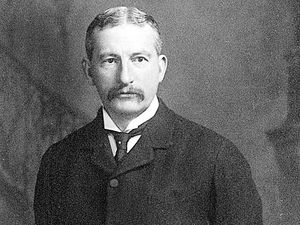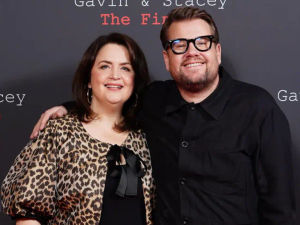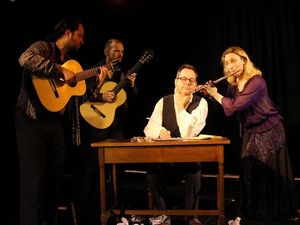Town prepares to celebrate the Shifnal man who scored England's first international football goal
A Shropshire man who scored England's first ever international football goal will be celebrated close to the 150th anniversary of him slotting the ball into the old onion basket.

William Kenyon-Slaney - who later went on to become Newport's MP - bagged the first goal in England's 4-2 trouncing of the auld enemy Scotland at Kensington Oval cricket ground in London on March 8, 1873.
The Revd Prebendary Chris Thorpe, of the parishes of Shifnal, Sheriffhales and Tong, asked: "How is this for a great pub quiz question – who scored the very first goal at an international football match?
"England defeated Scotland 4–2 at Kensington Oval in the second officially recognised international match.
"After a goalless first match, the first goal in international football was scored by William Kenyon-Slaney of England in the second minute of the rematch." Kenyon-Slaney is recorded as bagging a brace in the international encounter.
Mr Thorpe said the game was reported in the newspaper in these terms, “two of the best representative teams of England and Scotland met on Saturday afternoon to do battle at football for the honour of their respective countries.
"Light wind, a little rain and very faint sunshine rendered the atmospheric conditions for play as favourable as could be expected and gave the 3,000 or more of well-dressed spectators who attended the grounds a fair opportunity of witnessing an excellent exhibition of this manly and athletic sport.”
William Kenyon-Slaney went on to be elected as Member of Parliament for Newport, Shropshire.
Mr Thorpe added that the Kenyon-Slaney family still live in Shifnal and the latest generation of the family have been playing for local Shifnal teams.
To celebrate the 150th anniversary of this first ever international goal in football the people of Shifnal are planning three local events this year including an anniversary match.
The Shifnal’s Football Story exhibition will begin on March 4 at the Old Fire Station, Shrewsbury Road, 10am - 4pm. It will be an exhibition of the teams, the players, the equipment and the pitches.
Mr Thorpe will take centre stage at St Andrews's Church in Shifnal on March 5 when there will be a Hymns of Praise service at 6pm.
The church will resound to the sound of favourite hymns and interviews with Rupert Kenyon-Slaney, representatives from the FA and local football clubs.
"Come wearing a football top and celebrate all that is best in football!" said Mr Thorpe.
On May 20 all eyes will be on Shifnal Town's football ground for an anniversary match to celebrate this world first!.
Mr Thorpe said: "It will be a day for the whole family, with bouncy castle, barbecue, licensed bar, raffle, and an exhibition of period football kit from the National Football Exhibition. Funds raised will be donated to support the work of three local charities: Bright Star Boxing Academy, who are changing lives through boxing, education and community; Centre Stage, a voluntary Shifnal youth performing arts group; and Shifnal Help Foodbank, supporting Shifnal people who are struggling to put food on the table.
The Shropshire Star has previously reported that Lady Mabel Bridgeman, from Weston Park, on the Shropshire/Staffordshire border, may have been one of the first celebrity footballer’s wives.
Lady Bridgeman was born in 1855 to the 3rd Earl and Countess of Bradford who lived at Weston Park and married William Kenyon-Slaney in 1887.
However by the time they married his soccer career was over and he was representing the Newport constituency in parliament.
The Kenyon-Slaneys and their ancestors were noted for their involvement in philanthropic causes including an early involvement in the Much Wenlock Olympic Games.
Lady Mabel herself ran a field hospital at her husband’s family home during the First World War. She mixed in the same circles as the Royal Family and was much mourned when she passed away in 1933 aged 77.
Mr Kenyon-Slaney is recorded on Wikipedia as being a noted sportsman and played first-class cricket for the Marylebone Cricket Club (MCC), as well as playing at county level for Shropshire between 1865 and 1879.
As a keen "association football player" he donned the kit of the nomadic Wanderers Football Club and was selected to play for England against Scotland in the second ever football international on 8 March 1873, where he scored two goals.
Kenyon-Slaney became the first player to score in an international football match as the first international between the two nations in November the previous year had been a goalless draw.
He also won the FA Cup in 1873 with the Wanderers and was on the losing side for the Old Etonians in the drawn first match of the 1875 Final and both matches of the 1876 Final.
His Wikipedia page also said that in 1882 under the command of Sir Garnet Wolseley he took part in the Battle of Tel el-Kebir during the Urabi Revolt and was decorated for his efforts.
In 1887 he was promoted to Colonel and placed on half pay. He fully retired from the military in 1892.
He had two children; a daughter Sybil Agnes Kenyon-Slaney (b. 1888) and a son Robert Orlando Rodolph Kenyon-Slaney (b. 1892) who was High Sheriff of Shropshire in 1935.
In 1886 Kenyon-Slaney was elected to Parliament to represent the Newport division of Shropshire for the Conservative Party, which he represented until his death, after an attack of gout, in 1908. He was buried at St Andrew's Parish Churchyard, Ryton, Shropshire.





